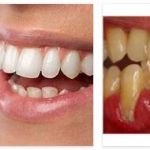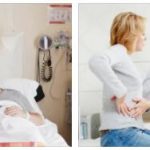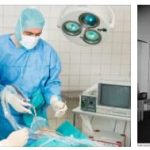Morbus Sinding-Larsen-Johansson (also: Patellar tendon syndrome) is an inflammatory disease of the patellar tendon attachment to the kneecap. It is caused by overloading the knee joint and mainly affects athletes and young people.
What is Sinding-Larsen-Johansson disease?
Sinding -Larsen-Johansson’s disease is a chronic degenerative inflammation of the knee joint. It starts at the point where the patellar tendon attaches to the lower tip of the kneecap. The patellar tendon absorbs loads acting on the knee joint. See growtheology for Comprehensive Guide to Leukoencephalopathy.
Overloading can cause irritation or inflammation of the patellar tendon at its insertion. Symptoms are severe pain on exertion and restricted mobility. In advanced stages, the disease can lead to a tendon rupture or necrosis of the kneecap with detachment of pieces of bone.
The name of the disease goes back to the Norwegian doctor Christian Magnus Falsen Sinding-Larsen and the Swedish doctor Sven Christian Johansson. They first described the disease in 1921 and 1922, independently of one another.
Causes
The main cause of Sinding-Larsen-Johansson disease is overuse of the knee joint. Frequent or prolonged heavy tensile loads on the patellar tendon can lead to inflammation, especially if the load is unfamiliar. Jumping sports, rapid changes of direction while running and abrupt stop-and-go movements are primarily risky.
Correspondingly, Sinding-Larsen-Johansson’s disease often affects basketball and volleyball players, long and high jumpers, tennis and soccer players. But joggers, skiers and weightlifters are also at risk. However, the complaints do not always have an external cause.
The internal causes include the raised kneecap, congenital ligament weakness and reduced flexibility of the muscles in the region of the knee joint. Genetic influences cannot be ruled out either. In addition, malpositions of the pelvis, spine or feet can lead to Sinding-Larsen-Johansson’s disease.
Symptoms, Ailments & Signs
The main symptom of the disease is severe pain in the area of the knee joint, more precisely below the kneecap. In some cases, redness or swelling also occurs. The knee joint is sensitive to pressure and mobility is limited. Stretching the leg is painful.
After physical exertion, the pain is particularly pronounced. In an advanced stage, the pain initially disappears shortly after the start of exertion, but reappears after exertion. Later, the pain also persists at rest. In 20 to 30 percent of patients, the symptoms occur on both sides. Since these symptoms can indicate various diseases of the knee joint, an early visit to the doctor for clarification and initiation of appropriate therapy is advisable.
Diagnosis & course of disease
As part of the diagnosis, the first step is an anamnesis interview. The doctor inquires about the symptoms, possible previous illnesses and the patient’s lifestyle, including physical activity. A physical examination is then carried out. In the case of Sinding-Larsen-Johansson’s disease, pressure pain can be detected at the level of the lower tip of the kneecap.
Stretching the leg is only possible with pain. If the examination confirms the suspicion of Sinding-Larsen-Johansson’s disease, the next step is an ultrasound examination, magnetic resonance imaging (MRI) or an X-ray examination. These procedures map changes in the bone structure of the knee joint, tendon, and surrounding structures.
This shows the degree of inflammation. A disease of Sinding-Larsen-Johansson’s disease can have four different grades (classification according to Roels et al., 1978). At first, the pain only occurs after exertion. As the degree of inflammation increases, the pain may appear at the beginning of exercise but then temporarily disappear, only to return after exercise is stopped.
With further deterioration, the pain persists beyond exertion in everyday situations and at rest. Finally, the patella tendon tears. Necrosis of the kneecap can also occur. If Sinding-Larsen-Johansson’s disease is diagnosed and treated early, the prognosis is very good. Otherwise there is a risk of the pain becoming chronic. Even after healing, excessive stress on the tip of the kneecap should be avoided.
Complications
Due to the Sinding-Larsen-Johansson disease, those affected primarily suffer from very severe and stabbing pain that occurs directly on the patient’s kneecap. The pain leads to severe limitations in everyday life and also to restricted movement. The affected areas are usually swollen and the pain increases when pressure is applied to the area or when the knee is moved.
The pain in the knee can also occur in the form of rest pain and thus also affect the sleep of the person concerned. This leads to insomnia, fatigue and general irritability in the patient. The quality of life of those affected is significantly reduced and restricted by the Sinding-Larsen-Johansson disease.
Complications usually occur when the knee continues to bear weight. This can also lead to irreversible damage to the knee. In most cases, no surgical intervention is necessary for the treatment and there are no complications.
The symptoms themselves can be limited by therapies. The life expectancy of those affected is also not affected by Sinding-Larsen-Johansson’s disease. In most cases, the course of the disease is positive.
When should you go to the doctor?
If knee complaints occur after sporting activities or heavy physical exertion, adequate rest and protection should be provided. If after a break or a restful night’s sleep there is a significant reduction in symptoms or a full recovery, no doctor is needed. In these cases, there is an overload that is healed independently by the body’s self-healing mechanism.
If the symptoms persist or increase in intensity, a doctor should be consulted. A doctor’s visit is also advisable if pain or impairment of the knee joint develops immediately after the start of a movement.
If the person concerned suffers from a decrease in physical performance or resilience, a visit to a doctor is advisable. If there is a bad posture or an incorrect load on the body, a doctor is needed. If sporting activities can no longer be carried out as usual, if pressure sensitivity develops or if sensitivity disorders occur in the knee, medical help is required.
An inability to fully extend the knee or to bear weight on it is a medical condition that requires treatment. Irregularities in blood circulation, changes and discolouration of the skin and abnormal behavior should be presented to a doctor for clarification.
Treatment & Therapy
In order to counteract the spread of the inflammation, therapy should be initiated as soon as possible. The regeneration is lengthy, lasting up to a year. Nevertheless, conservative therapy is sufficient for about 90 percent of the diseases.
The most important thing is to protect the affected knee joint. Regular stretching of the thigh muscles reduces tension in the kneecap area. Further treatment depends on the degree of the disease. Warm or cold compresses, physiotherapy and manual therapy are general measures that have a positive effect on the course of the disease.
Electrostimulation, ultrasound and shock wave treatment are also used successfully. Naturopathic therapies such as homeopathy, phytotherapy and treatment with Schuessler salts can further support healing. The aim of all these treatments is to promote regeneration by activating the local metabolism and stimulating regional blood circulation.
Relaxing the thigh muscles reduces the tensile forces on the kneecap. Anti-inflammatory drugs and painkillers also help. If conservative therapy methods are not sufficient, an operation in the form of an arthroscopy is performed.
Common procedures include removal of inflammatory tissue or parts of the patellar tendon, denervation of the area surrounding the tendon, detachment of the patellar tendon from the tip of the kneecap, and removal of dead bone tissue.
Outlook & Forecast
The prognosis for Sinding-Larsen-Johansson’s disease is generally considered to be favorable. The prerequisite for this is that patients experience a quick start of treatment. Depending on the extent, conservative or surgical measures are used. Compliance with the recommended rules of conduct over the next three to twelve months is essential for recovery. These include rest, cooling, taking painkillers and physiotherapy. A final healing can only occur within the framework of consistent implementation.
If treatment is not started, long-term movement restrictions and pain regularly result. It is true that this does not shorten the lifespan; however, the quality of life suffers significantly in some cases. In practice, the diagnosis of Sinding-Larsen-Johansson disease is more common in men than in women.
After completing treatment for Sinding-Larsen-Johansson disease, certain sports should be avoided. The workload should also be significantly reduced. This is the only way to ensure that the tip of the kneecap is free of symptoms. The doctor treating you talks to your patient about the sporting activities you do and makes recommendations. Adhering to the advice improves the prospect of a lifelong freedom from symptoms. Their implementation is the sole responsibility of the patient.
Prevention
In order to prevent overloading the patellar tendon, it is particularly important to warm up well before exercising and to stretch the muscles regularly. When starting a new sport, the load on the knee joint should be gradually increased. There must be enough time for regeneration between sports units. In the case of misalignments, orthopedic insoles reduce the risk of developing Sinding-Larsen-Johansson’s disease. If pain occurs in the area of the knee joint, the load should be reduced immediately.
Aftercare
In the follow-up care of Sinding-Larsen-Johansson’s disease, the focus is primarily on protecting the affected knee joint. The regeneration phase lasts for a longer period of time, usually around twelve months. In severe cases, regeneration can take up to two years. If symptoms persist after the end of therapy, it is advisable to abstain from sporting activities.
If the patient is free of symptoms or has only minor symptoms, light sporting activities can be resumed. Treatment with painkillers is rarely necessary. Painkillers such as paracetamol can be taken for a short time. Cooling compresses placed on the affected areas relieve pain after physical activity. The poultices are then applied for about 20 minutes.
Knee-friendly sports such as cycling or swimming are suitable in the regeneration phase. The resumption of sporting activities takes place in small steps. Building up training for the thigh extensors (quadriceps) supports further regeneration. Future overloading of the joints favors the recurrence of Sinding-Larsen-Johansson’s disease. Pain in the knees and hips must be discussed with the doctor treating you in order to avoid a recurrence.
A malposition in the hip, ankle or knee joints is treated in parallel with the patella tip syndrome in order to relieve the knee joint. This requires the use of orthopedic insoles. Only in a few severe cases does the symptom not improve despite rest. Then the inflamed tendon material is removed in an operation.
You can do that yourself
Since Sinding-Larsen-Johansson’s disease is a disease with physical causes, coping with everyday life and self-help are aimed at alleviating the symptoms. The inflammation associated with the disease can be alleviated primarily by cooling. In this way, symptoms of pain are combated. In addition, affected patients should refrain from physical exertion through sport in order not to run the risk of aggravation.
However, patients should not do without exercise. Physiotherapeutic exercises can be used to maintain motor skills and prevent the muscles from deteriorating. For example, it is advisable to train the thigh extensor, as this muscle is most likely to be affected by Sinding-Larsen-Johansson’s disease. In addition, if the pain is severe, those affected can resort to medication that has an anti-inflammatory or pain-relieving effect. Paracetamol is a good choice for this. However, if you take it regularly, you should consult a doctor to avoid side effects or consequential damage from taking painkillers.
A basic relieving posture of the affected joint should also be avoided. On the one hand, relieving postures can lead to malformations if they are carried out in the long term, and on the other hand they accelerate muscle breakdown. For those affected, it is advisable to make everyday life as normal as possible.








